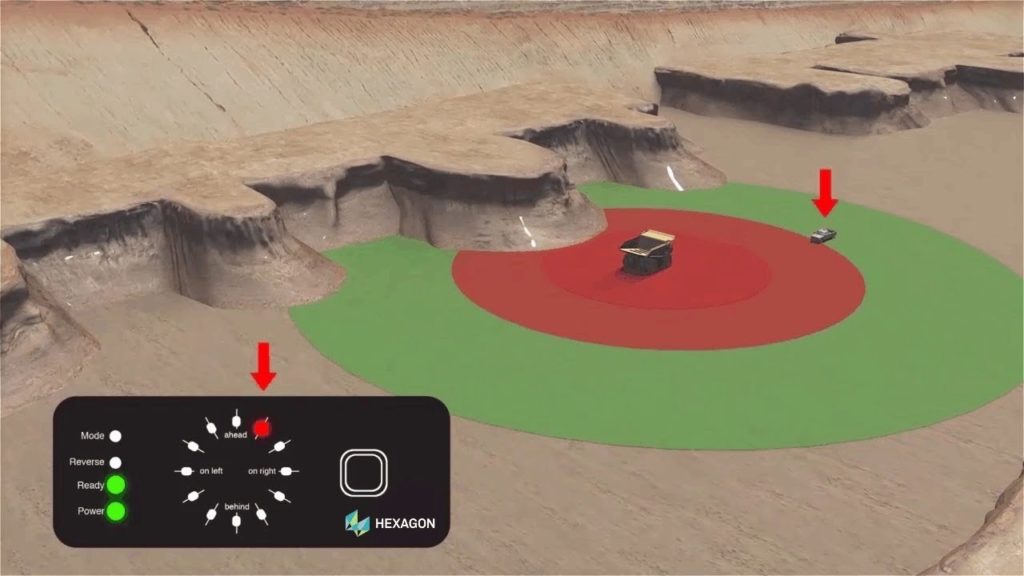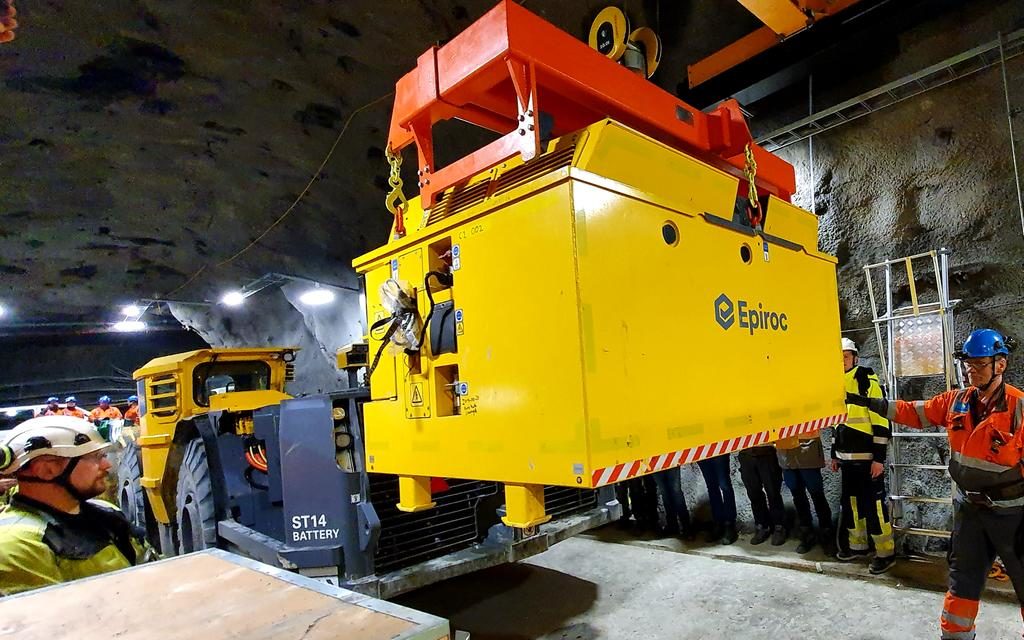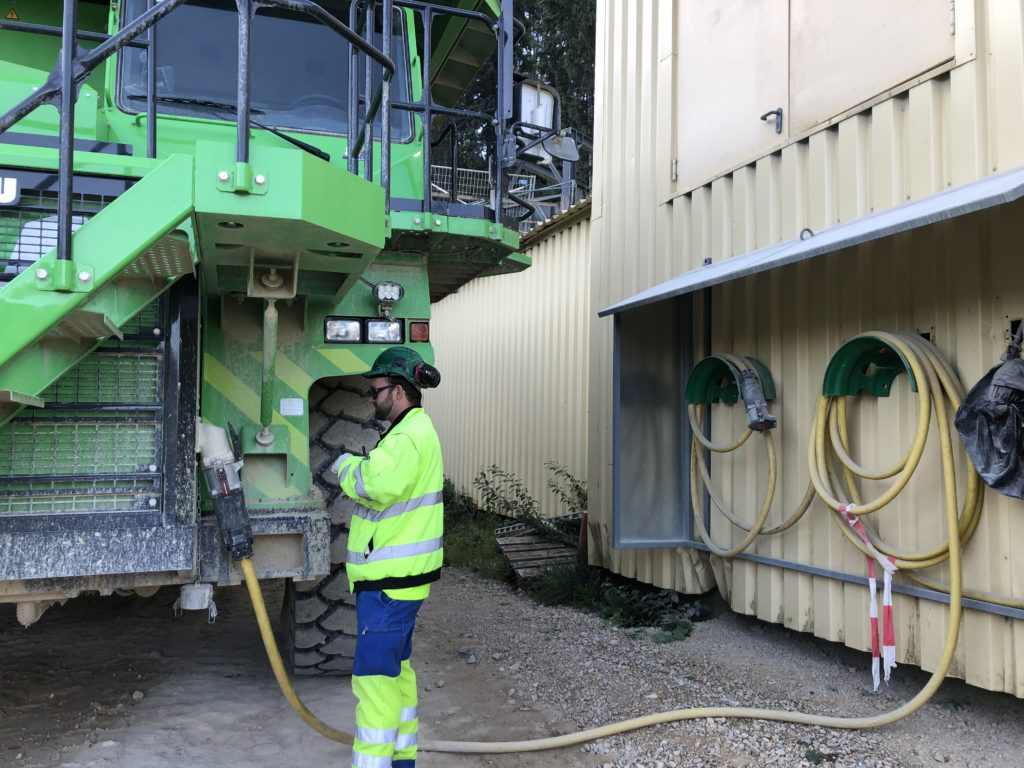When the International Council on Mining and Metals (ICMM) launched its Innovation for Cleaner, Safer Vehicles (ICSV) program just over a year ago, some industry participants may not have realised how much progress could be made so quickly by taking a collaborative approach.
The ICMM has proven influential across the mining industry since its foundation in 2002 in areas such as corporate and social governance, environmental responsibility, and stakeholder relations, yet it has rarely, until this point, engaged directly as an industry group with original equipment manufacturers (OEMs) and service providers.
Close to 12 months after being established, it’s clear to see the program and the council itself has been successful in bridging a divide.
It has been able to corral a significant portion of the mining and mining OEM market players into a major industry discussion on core focus areas set to dominate the sector for the next two decades.
Now 27 of the world’s leading mining companies and 16 of the best-known truck and mining equipment suppliers are collaborating in a non-competitive space “to accelerate the development of a new generation of mining vehicles that will make vehicles cleaner and safer,” the ICMM says.
The ICSV program was created to address three of the most critical safety, health and environment performance issues in the ICMM’s mission towards zero harm and decarbonisation. Achieving this goal would involve the industry introducing and adopting the next generation of equipment to respond to the challenges.
More specifically, the program aims to:
- Introduce greenhouse gas emission-free surface mining vehicles by 2040;
- Minimise the operational impact of diesel exhaust by 2025; and
- Make collision avoidance technology (capable of eliminating vehicle related collisions) available to mining companies by 2025.
In all three, it seeks to address the industry’s innovation challenge of ‘who motivates who’ or the chicken and egg analogy, according to Sarah Bell, Director, Health, Safety and Product Stewardship for the ICMM.
“You can imagine a mining company saying, ‘we can’t adopt technology that doesn’t yet exist’ or an OEM saying, ‘we can’t invest in development because we’re getting mixed market signals’. This is, of course, why this program has been set up in the way it has,” she told IM. “Bringing both the mining company and OEMs together, they have been able to work through these normal innovation challenges and align on defining the direction of travel and critical complexity to be solved for each of the ambitions set.”
High-level participation
The list of companies the ICMM has been able to involve in this program is impressive.
It is being guided by a CEO advisory group of six; three from the mining community – Andrew Mackenzie (CEO, BHP), Mark Cutifani (CEO, Anglo American) and Nick Holland (CEO, Gold Fields) – and three from the mining equipment supply side – Denise Johnson (Group President of Resource Industries at Caterpillar), Max Moriyama (President of the Mining Business Division at Komatsu) and Henrik Ager (President of Sandvik Mining and Rock Technology).
On the mining company front, ICMM membership makes up around 30% of the total metal market share, with some 46% in copper, 27% in gold and 42% in iron ore. Participating OEMs and third-party technology providers, meanwhile, include the three majors above, plus Cummins, Epiroc, Wabtec Corporation (formerly GE), Hexagon Mining, Hitachi Construction Machinery, Liebherr, MacLean Engineering, MTU, Modular Mining Systems, PBE Group, Nerospec, Future Digital Communication and Miller Technology.
Bell says the high-level participation builds the “widespread confidence” needed to accelerate investment in these three key areas”, while the ICMM’s focus on the leadership side of the technology integration equation and change management has proven “absolutely key”.
She clarified: “This collaboration operates under anti-competition and anti-trust rules. Our role is to convene the parties, motivate action and promote solutions.”
The program offers a “safe space for the OEMs and members to work openly in a non-competitive environment”, she added, explaining that the aim is not to come up with “preferred technologies”, but define the “functional and operational pathways required to meet the ambitions set”.
Vehicle interaction (VI)
Some of the ambitions look easier to achieve than others.
For instance, collision avoidance and proximity detection technology has made huge strides in the last decade, with the ICMM arguing its 2025 target is like a “sprint”, compared with the “10,000 m race” that is minimising DPM underground by 2025 and the longer-term aim to introduce GHG-free surface mining vehicles by 2040.
“There are regulations that require implementation of collision avoidance and proximity detection technology by the end of 2020 in South Africa,” Bell said. This will undoubtedly provide a catalyst for further developments to speed up.
The ICSV program is also leveraging the work of the Earth Moving Equipment Safety Round Table (EMESRT) in its development of fundamental functional/performance requirements for operators and technology providers.
These requirements were updated and released by EMESRT in September and are known as ‘PR5A’.

Bell delved into some detail about these requirements:
“The EMERST requirements are designed around a nine-level system that seeks to eliminate material unwanted scenarios such as – equipment to person, equipment to equipment, equipment to environment and loss of control,” she said.
“The fundamental change with this newly released set of functional requirements by EMESRT is that the mining industry users have defined the functional needs for levels 7-9 (operator awareness, advisory controls, and intervention controls). That stronger level of collaboration hasn’t necessarily been there.”
EMESRT and its guidelines have been given an expanded global platform through the ICMM’s ICSV, with the program, this year, providing the convening environment for users and technology providers to help finalise these updated requirements, according to Bell.
With all of this already in place, one could be forgiven for thinking the majority of the hard work involved with achieving the 2025 goal is done, but the working group focused on VI knows that while OEMs continue to retrofit third-party vehicle collision and avoidance systems to their machines the job is not complete.
“Let’s think about the seatbelt analogy: you don’t give buyers of vehicles a choice as to whether they want a seatbelt in their car; it just comes with the car,” Bell said.
“At the moment, by design, vehicles don’t always have this collision and avoidance systems built in, therefore there is a big opportunity for collaboration between OEMs and third-party technology providers.”
Underground DPM goals
“The DPM working group have recognised that, in the case of the DPM ambition, ‘the future is already here, it’s just unevenly distributed’,” Bell said.
“Bringing together the OEMs and the mining companies this year through the ICSV program has enabled the group to explore the variety of existing solutions out there today,” she added.
These existing solutions include higher-tier engines, battery-electric equipment, tethered electric machinery, fuel cell-equipped machines for narrow vein mining and solutions to remove DPMs and other emissions from the environment like Johnson Matthey’s CRT system.
And, there are numerous examples from North America – Newmont Goldcorp at Borden, and Glencore and Vale in Sudbury – South America – Codelco at El Teniente Underground – and Europe – Agnico Eagle Mines at Kittilä (Finland, pictured) – to draw from.

Bell also mentioned some examples from Australia where regulatory changes have seen miners apply existing technology and carry out changes in their work plans and maintenance practices to minimise DPM emissions.
Haulage and loading flexibility, battery charging and mine design have all come under the spotlight since these new generation of ‘green’ machines have emerged, so achieving the 2025 goal the ICSV stated is by no means a foregone conclusion.
“There remains more work to do in achieving diesel-free vehicles underground,” Bell said.
The interested parties are aware of this and the program’s DPM maturity framework is helping miners and OEMs plot a course to reaching the target, she explained.
“The DPM maturity framework promotes existing solutions available today that would enable a mining operation to reduce their DPM emissions to a level that would meet the ambition level (shown as Level 4 – transition to zero),” she said.
These frameworks are useful for starting a “change conversation”, Bell said, explaining that mining companies can assess within their organisations where they currently sit on the five-level chart and discuss internally how to move up the levels to meet their goals.
These same frameworks look beyond minimising “the operational impact” of DPM emissions underground, with Bell explaining that Level 5 of the maturity framework involves “non-DPM emitting vehicles”.
GHG-free surface mining vehicles
Even further in the distance is the longer-term target of introducing greenhouse gas emission-free surface mining vehicles by 2040.
This ambition, more than any other, is less clearly defined in terms of technological solutions across the industry.
While battery-electric solutions look like having the goods to reach DPM-free status underground with expected developments in battery technology and charging, the jury is still out on if they can create a GHG-free large-scale open-pit mining environment.
The world’s largest battery-electric haul truck – eMining’s 63-t payload eDumper (pictured) – may have proven its worth at a Ciments Vigier-owned quarry in Switzerland, but the world’s largest open-pit mines require a solution on another scale altogether.
As Bell said: “There is a lot of work to do to develop batteries at scale for surface fleet that suit the different operating conditions.

“That’s a key point because that lends itself to the fact that we don’t want one solution; we will need multiple solutions. We don’t want to stifle innovation; we want to encourage it.”
There has also been in the last 18-24 months a mini renaissance of trolley assist projects that, ABB’s Gunnar Hammarström told IM recently, could, in the future, work in tandem with battery-powered solutions to provide a GHG-free solution.
The ability for industry to pilot and validate technology options like this “within the boundaries of anti-competition” is crucial for its later adoption in the industry, Bell said.
She said a key enabler of industry decarbonisation is access to cost competitive clean electricity, which would indicate that regions like South America and the Nordic countries could be of interest in the short and medium term for deploying pilot projects.
It is this goal where the industry R&D spend could potentially ramp up; something the ICMM and the ICSV is aware of.
“For the OEMs and mining companies to effectively minimise capital expenditure, optimise R&D expenditure and reduce the change management required by the industry, there needs to be a careful balance of encouraging innovation of solutions, whilst managing the number of plausible outcomes,” Bell said.
In terms of encouraging the development of these outcomes, carbon pricing mechanisms could provide some positive industry momentum. Vale recently acknowledged that it would apply an internal carbon tax/price of $50/t when analysing its future projects, so one would expect other companies to be factoring in such charges to their future mine developments.
Industry-wide GHG emission caps could also provide a catalyst. In countries such as Chile – where up to 80% of emissions can come from haul trucks, according to ICMM Senior Programme Officer, Verónica Martinez – carbon emission reduction legislation could really have an impact on technology developments.
Forward motion
While 2019 was a year when the three working groups – made up of close to 50 representatives in each work stream – outlined known barriers or opportunities that might either slow down or accelerate technology developments, 2020 will be the year that regional workshops convened to “encourage first adopters and fast followers” to move these three ambitions forward take place, Bell said.
A knowledge hub containing the previously spoken of maturity frameworks (delivered for all three groups) will allow the wider industry outside of the ICMM membership to gain a better understanding of how the miner-OEM-service provider collaboration is working.
Bell said the ICMM already has a number of members testing these group frameworks on an informal self-assessment basis to understand “how they are being received at an asset level and feedback insights to the group in an effort to understand how we may portray an industry representative picture of where we are today”.
Such strategies bode well for achieving these goals into the future and, potentially, changing the dynamic that has existed between end users and suppliers in the mining sector for decades.
Bell said: “The feedback that we got from OEMs is that mining companies had completely different objectives, but they have now greater confidence that we are aligned on the direction of travel towards the ambitions set.”










